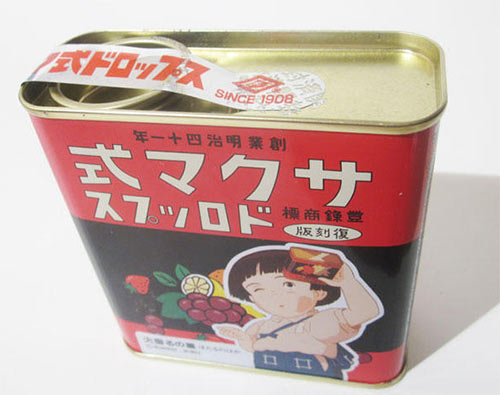After 4 years of studying Japanese at SDSU and 22 years living in the country, I’m as functionally bilingual in the language as I’d ever need to be, able to talk with business partners and review contracts in Japanese, able to get my car repaired and order pizza, etc. Still, the brain only learns what it needs to know, and all I need to do to cut my linguistic competence in half is to walk into a history museum and expose myself to words from even a century ago, since the older words are so unfamiliar to me. (Japanese underwent many changes as it modernized over the past 80 years, including changing its writing direction, as seen in the Sakuma Drops candies with the logo written in the ‘old’ horizontal direction of right to left.) One good thing about living in Japan is that it will give you a real appreciation for fish, and I’ve really learned to enjoy everything from saba stewed in miso to broiled sanma with soy sauce and grated daikon radish on top. Of course, I have no idea what these fish are called in English since I’ve only encountered them in Japan…though the Internet tells me they’re Japanese mackerel and Pacific saury.

An example ofarchaic right-to-left yokomoji writing. Flavored with Setsuko’s tears.















